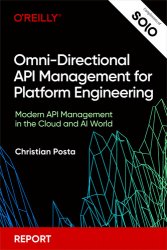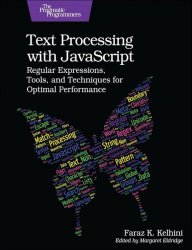 Название: Omni-Directional API Management for Platform Engineering: Modern API Management in the Cloud and AI World
Название: Omni-Directional API Management for Platform Engineering: Modern API Management in the Cloud and AI WorldАвтор: Christian Posta
Издательство: O’Reilly Media, Inc.
Год: 2024-10-10
Язык: английский
Формат: pdf, epub
Размер: 10.1 MB
Navigating the world of software development often involves tackling unexpected challenges and dealing with inefficient processes. As organizations increasingly use a mix of internal and external APIs, including those from SaaS, partners, and AI/LLM, effective API management becomes essential. This report dives into how platform engineering can streamline these processes, offering developers secure, self-service access to resources while ensuring compliance and efficient management.
Discover how modern tools like Envoy proxy and Istio are transforming API management. These tools are designed to handle complex service communications and are now enhanced to manage AI/LLM use cases effectively. Author Christian Posta explores the shortcomings of traditional API management systems and why they struggle to keep up in today's automated, cloud native environments. What you'll learn:
The importance of self-service capabilities for API developers
The limitations of traditional API management tools
The characteristics of an effective, modern API gateway
Specific considerations for AI/LLM use cases
How Istio supports advanced API management with new features
APIs underpin the digital experiences an organization delivers to its customers. Through a website, mobile app, or partner integrations, adding new functionality involves making changes or delivering new APIs. The speed and safety of API delivery is a serious business differentiator. Bottlenecks, inefficiencies, and outages cost a business in opportunity and real money. A modern API management system needs to enable self-service and tenancy, while reducing the blast radius of changes to help an organization achieve its business goals.
Unfortunately, API developers sometimes have to wait two or more weeks to get their changes reviewed, approved, and implemented. Often the API developers need to open tickets to get this work done, meaning another team must complete some task, such as changing the routing rules on an enterprise load balancer or updating an API management system, before the developers can continue their own work. The outdated technologies used in these API management systems don’t lend themselves to automation or tenancy, so the work is often done manually or by pointing and clicking on some proprietary UI. This is slow and increases the risk of errors.
The DevOps movement focuses on some of these problems, reducing the siloed nature of our IT organizations between Dev and Ops and improving collaboration. Focusing on automation, collaboration, and shifting left are generally good practices, but in some cases went too far—for example, pushing application teams to own and manage their own Kubernetes platforms and distributions. Placing the burden on application teams to own their infrastructure, including observability, security, CI/CD (continuous integration, continuous delivery), etc., overloads teams that don’t have the expertise to own this infrastructure. Shifting too far to the left also causes other problems, such as compliance, governance, and sprawl-related issues.
The pendulum is swinging back these days in the form of “platform engineering” and hopefully will arrive at a happy medium: reducing silos, improving tenancy, and giving teams autonomy with access to what they need. For example, we see platform engineering teams providing the tools, automation, and self-service workflows for API developers to deploy new APIs or changes much faster. These self-service capabilities also align with compliance, security, and reliability goals.
Скачать Omni-Directional API Management for Platform Engineering
[related-news] [/related-news]
Комментарии 0
Комментариев пока нет. Стань первым!















